Trails and Tales
Welcome
You are invited to meet some of the people and explore places from Hebron’s past along Marjorie Circle. This child and family friendly QR tour can be done in any order. Each site is a short walk from here.

Hebron Center in 1830 by Reuben Rowley from a c 1910 postcard
Getting started --A Changing Townscape
Have a seat in one of the Adirondack chairs seasonally placed next to the Old Town Records building.
Take a look at the buildings surrounding the Route 85/66 traffic light heading south.
This section of the Hebron Green has been changed several times over the past 300 years. Originally in the 1700's the Hebron Meetinghouse stood where the traffic light is located. Further south was the Hebron elm planted in 1763 to commemorate the end of the French and Indian War. To the west stood the Post House and store as well as Fuller’s tavern.
Think about it
Change and time are interrelated. Often as time goes on, a given scene whether natural or man-made will change. Try to keep the images you see today of Hebron Center in your mind. If you visit this spot 5 or 10 years from now, see if you can remember things that were different. To a large degree this is what history is about, noting changes over time. Another part of history is explaining why those changes took place.

William Annable sketch of Hebron Center c 1840
Courtesy of the Douglas Library
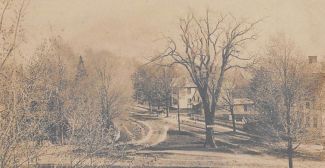
Tennant postcard of Hebron center c 1903
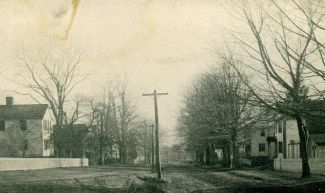
Tennant postcard about 1910
Think about it
Compare the four views of Hebron over time with what you see today. What has changed and what has stayed the same? Based on the views, in what time period would you like to live? Why?
The View to the West looking down Marjorie Circle
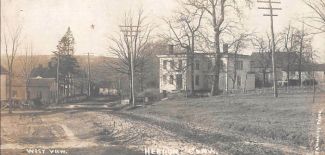
Fuller’s Tavern stood until it burned 1888 where Route 66 crests the hill before the traffic light. It stood to the left of the Tennant postcard view reproduced above. Today, not only has Fuller’s Tavern disappeared, but several other structures have also vanished as well. The Crane House and Conference House no longer remain (located to the left of the postcard view).
This early 20th century photograph shows Marjorie Circle when it was the primary route to Marlborough before Route 66 was built. The Conference House served as a lecture hall for people in Hebron. In an age of rudimentary newspapers and without internet media, the Conference House provided a lecture room where speakers could talk about important topics, such as the effects of the Fugitive slave Act on New England’s Black population, the role of states’ rights, or Darwinian thoughts on evolution. Eventually the Conference House was turned into a garage and then demolished.
Think about it
Do you or your family ever attend special programs together? If so, what type? Do you ever watch a documentary program with your family on TV?
What other buildings do you see in the postcard that are no longer standing today?
Let us now meet Your Neighbors along Marjorie Circle.
Dr. Orrin White’s house – Horton House #8 Marjorie Circle
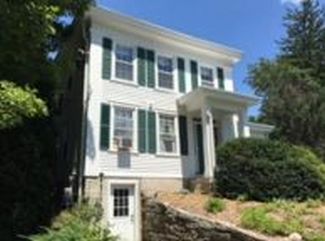
Dr. Orrin White’s house – Horton House today
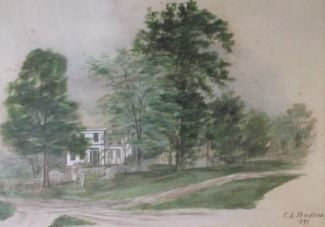
Dr. Orrin White’s house – Horton House 1893
Painted by C.L. Pendleton
When this house was built in 1856 it was one of the most stylish houses in Hebron with its wide eaves and flat tin roof that undoubtedly came from Mitchell’s tinsmith shop located by Fuller’s tavern across the way. Dr. White treated many African American families in Hebron. In the 1850’s, he had a 13-year-old African American woman named Almira Russell in his household. Dr. White died in 1867 during an outbreak of smallpox amongst Hebron’s African-Americans.
To assist with the housekeeping in the 1860's Dr. White’s family employed a young Irish woman named Mary Fitzgerald who lived with the family. In the 1850’s Rosa Cavrod and Ellen Fitzmore were two of the five young Irish women who sought employment as housekeepers in Hebron Center. By the 1860’s there were many Irish girls working in the Silk Mill in Amston, then called Turnerville. When the Railroad was put in during the 1870’s, many Irish workmen were employed. After the Civil War many of these young Irish workers moved on to other jobs, but a few purchased farms and settled in town.
In the 20th century the Horton family lived here. Helen Horton was the Librarian for the Douglas Library for many years.
Think about it
Rosa Cavrod, Ellen Fitzmore and Mary Fitzgerald probably did not attend either the Congregational or Episcopal churches in Hebron Center and there was no Roman Catholic Church nearby. Sunday would be their day off. How do you suppose they spent their day off?
Where to go next
From here continue to walk down Marjorie Circle





